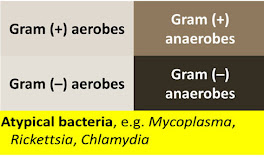99 problems...part 2

So, there you are having to decide how to treat before you have all the information you need. A bit of local knowledge and a close look at the horse will get you in the ballpark (see 99 problems...part 1 ). How do you take that first step? Begin appropriate empiric treatment before going to narrow spectrum It may take between 24 and 72 hours (plus transportation time and non-working days because some people have weekends) to obtain positive identification of the pathogen. While you are waiting, broad-spectrum therapy can begin. In horses, the combination of a beta-lactam like penicillin or ampicillin with an aminoglycoside, whether it be amikacin in foals or gentamicin in adults, is widely practiced with good reason. This will likely cover most common bacterial infectious agents. Alternatively, other broad spectrum antibacterials can be used. Knowledge of regional sensitivity and resistance patterns, gained from previous culture results, is invaluable to minimize chances of delayin...
